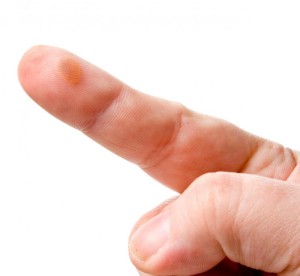Nickel allergy is usually the common cause of contact allergic dermatitis. An infected individual with dermatitis can develop nickel allergy when in direct contact with metals that contains nickel. The common area that nickel allergy can develop are the earlobes from earrings, the wrist from a strap of a watch and from a stud in the jeans. The affected areas become severely itchy, red and blistered or acute dermatitis and chronic dermatitis which is dry, thick and pigmented.
Nickel allergy affects people of all ages. Once a person develops nickel allergy, he/she will always be sensitive to other metals and there is a need to avoid direct contact with the metal. Women are more susceptible to develop nickel allergy than in men.
An allergic reaction usually begins within 12-48 hours after exposure and persists for about 2-4 weeks.
Symptoms
- Redness and changes in the color of the skin
- Rash or bumps will develop on the skin
Dry patches of skin that looks similar to a burn - Severe itchiness
- Sometimes there is blistering and drainage of fluids
- Dry patches of skin that looks similar to a burn
Causes
- Wearing costume jewelry that has high content of nickel. Men are less susceptible to develop nickel allergy unless exposure due to work.
- Nickel sulfate present in commonly used products such as creams and medications.
- Nickel allergy can be inherited or genetic
Sources of nickel exposure
- Coins
- Belt buckles
- Watch bands
- Metal tools
- Keys
- Coins
- Frames for eyeglass
- Fasteners for clothing like zippers, snaps and hooks in bras
Treatment
- Apply a soothing lotion such as calamine lotion to lessen the itchiness.
- Apply moisturizers regularly such as petroleum jelly or mineral oil to lessen the need for topical corticosteroids.
- Apply a moist compress using Burow’s solution which is an over-the-counter medication that contains aluminum acetate that is diluted white vinegar and tap water. Soak a clean cloth in Burow’s solution and place it over the rash for at least 15-45 minutes for several times every day.
- Apply the prescribed over-the-counter topical corticosteroid or hydrocortisone to lessen the itching and rashes. Apply hydrocortisone on the affected area before applying a wet compress to promote better penetration on the skin.
- Take over-the-counter oral antihistamines such as diphenhydramine to minimize itchiness for a short time, but effective with nickel allergy. Avoid medications such as antibiotic creams that contain neomycin since it can make the allergic condition worse.
Tips
- Apply a coat of Nickel Guard to help provide a barrier between the jewelry and the skin. It can be applied on the surface of the ring and other jewelries.
- Keep the skin dry when there is direct contact with the metal.
- Wear a bland moisturizing cream that serves as a barrier between the metal and the skin.
- Cover the metal handles with plastic to minimize the development of an allergic reaction.
- Wear a hypoallergenic jewelry such as those that are made out of nickel-free stainless steel, 18-karat yellow gold, sterling silver, copper and platinum.

